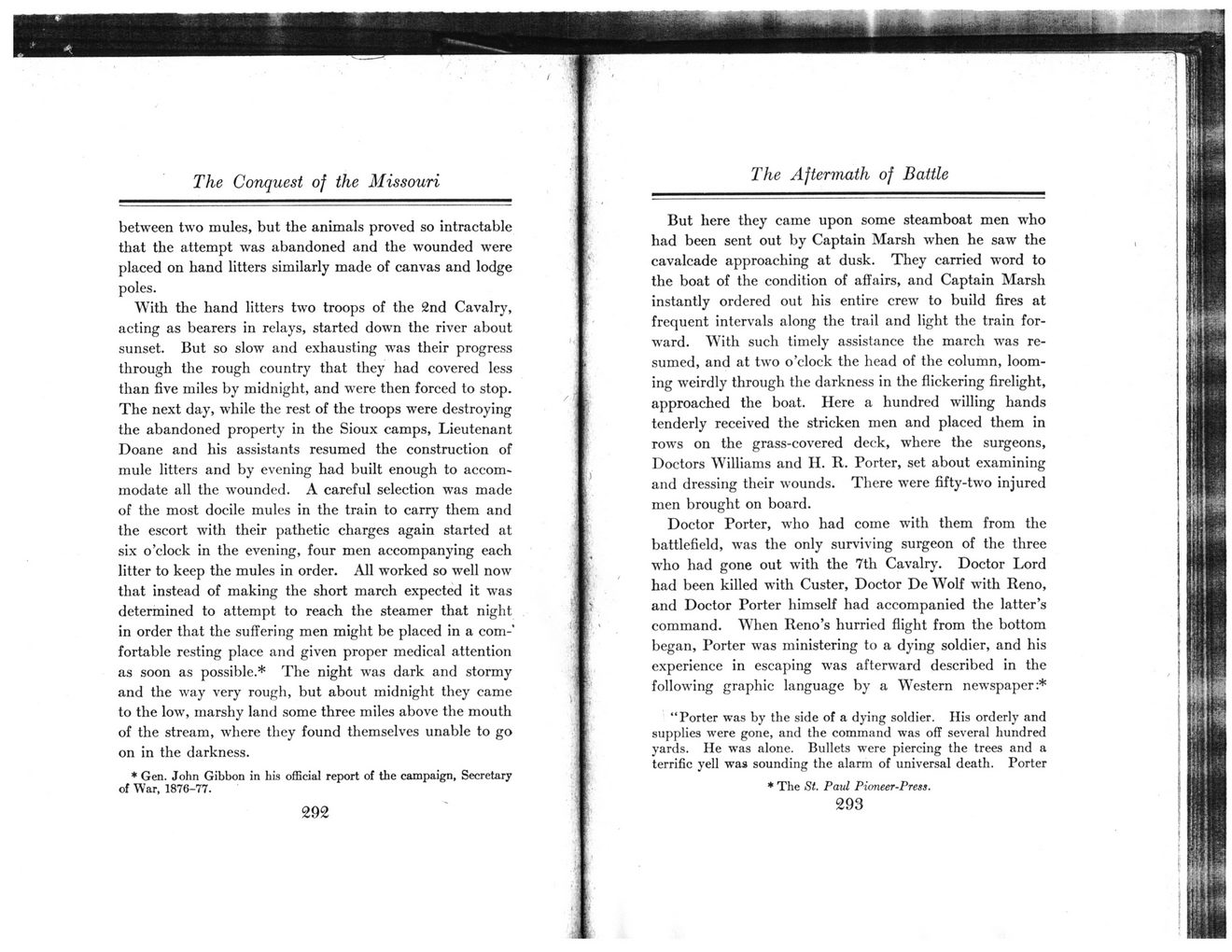This text was obtained via automated optical character recognition.
It has not been edited and may therefore contain several errors.
The Conquest of the Missouri between two mules, but the animals proved so intractable that the attempt was abandoned and the wounded were placed on hand litters similarly made of canvas and lodge poles. With the hand litters two troops of the 2nd Cavalry, acting as bearers in relays, started down the river about sunset. But so slow and exhausting was their progress through the rough country that they had covered less than five miles by midnight, and were then forced to stop. The next day, while the rest of the troops were destroying the abandoned property in the Sioux camps, Lieutenant Doane and his assistants resumed the construction of mule litters and by evening had built enough to accommodate all the wounded. A careful selection was made of the most docile mules in the train to carry them and the escort with their pathetic charges again started at six o?clock in the evening, four men accompanying each litter to keep the mules in order. All worked so well now that instead of making the short march expected it was determined to attempt to reach the steamer that night in order that the suffering men might be placed in a com-' fortable resting place and given proper medical attention as soon as possible.* The night was dark and stormy and the way very rough, but about midnight they came to the low, marshy land some three miles above the mouth of the stream, where they found themselves unable to go on in the darkness. * Gen. John Gibbon in his official report of the campaign. Secretary of War, 1876-77. 292 The Aftermath of Battle But here they came upon some steamboat men who had been sent out by Captain Marsh when he saw the cavalcade approaching at dusk. They carried word to the boat of the condition of affairs, and Captain Marsh instantly ordered out his entire crew to build fires at frequent intervals along the trail and light the train forward. With such timely assistance the march was resumed, and at two o?clock the head of the column, looming weirdly through the darkness in the flickering firelight, approached the boat. Here a hundred willing hands tenderly received the stricken men and placed them in rows on the grass-covered deck, where the surgeons, Doctors Williams and H. R. Porter, set about examining and dressing their wounds. There were fifty-two injured men brought on board. Doctor Porter, who had come with them from the battlefield, was the only surviving surgeon of the three who had gone out with the 7th Cavalry. Doctor Lord had been killed with Custer, Doctor De Wolf with Reno, and Doctor Porter himself had accompanied the latter?s command. When Reno?s hurried flight from the bottom began, Porter was ministering to a dying soldier, and his experience in escaping was afterward described in the following graphic language by a Western newspaper:* ?Porter was by the side of a dying soldier. His orderly and supplies were gone, and the command was off several hundred yards. He was alone. Bullets were piercing the trees and a terrific yell was sounding the alarm of universal death. Porter * The St. Paid Pumeer-Press. 293

Williams, Dr John W Conquest-of-the-Missouri-10